The Darjeeling Himalayan Railway was declared a UNESCO World Heritage Site* in December 1999. It’s a 2-foot (610 mm) gauge railway between New Jalpaiguri and Darjeeling built between 1879 and 1881. It’s about 55 miles (88 kilometers) long and climbs from about 330 ft. ( 100 meters) to 7,407 ft. (2,200 meters) above sea level. It’s an integral part of the Darjeeling landscape and Darjeeling’s story. Indeed, no visit to Darjeeling can be complete without taking a ride on the train.
Perhaps monsoons are the ideal months to gaze at life in the Darjeeling Hills, seeking stories more appealing than regular tourist narratives. Beyond the clear sky of autumn, the imposing snow peaks of Mt. Kanchenjunga hold exotic mysteries and provide a profound narrative of the hills’ history and culture. Explorers and mountaineers trotted across the horizon from the early 19th and 20th centuries in search of mind-blowing stories. Their quests were idiosyncratic but brought significant inputs in telling the history of their time. Several ethnographers spent years studying indigenous populations. Some of these were akin to the rarest cultural experiences that one could only see if traveling like a local. For almost everyone living uphill, the Darjeeling Himalayan Railway (DHR) that opened in 1881 was the only option to commute unless they missed the train and boarded a bullock cart on a much longer journey. There was no concept of a “Toy Train” back then. In 1910, the railway carried 174,000 passengers and 47,000 tons of goods.
In the decades since its construction, the commuter railway has established itself as a tourist attraction with its 55 miles of zig-zags and loops. It was a welcome change for those who prefer a closer look at the Hills instead of just check-boxing. Among those who came were authors, filmmakers, poets, scholars, and artists. When the Buddhist monks traveled on regular passenger trains, they also had opportunities to interact with residents, which brought them closer to the realities of daily life at the hills.
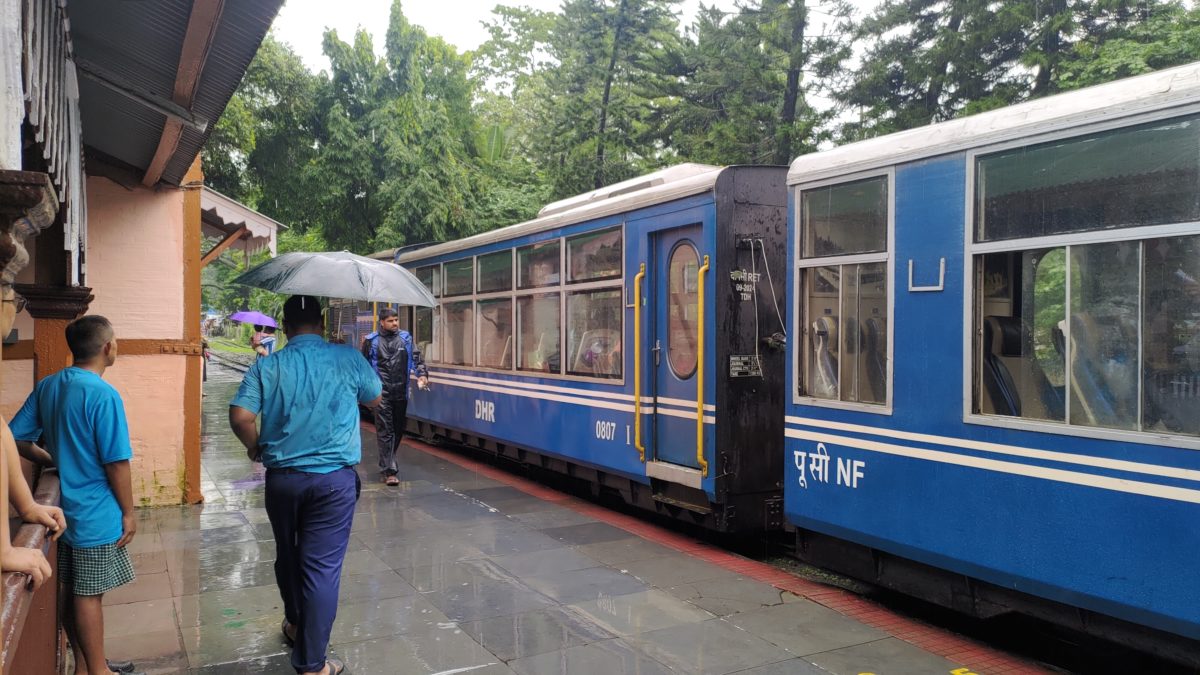
I consider myself less fortunate to not be able to travel like they did. When I started taking daily trains to Darjeeling, it was merely a tourist affair. Though I could intervene in dialogues that attracted me, it was mainly with the staff at the DHR. Sitting at a window seat and passing by the initial corridor of Siliguri town, I often imagined an explorer’s perception of traveling uphill in this tiny engineering marvel from centuries ago. Trains were built with aesthetics harking at the British Empire’s Victorian glory. For me, however, what has been more intriguing is the absence of the British and the leadership of the locals. Once, during the peak monsoon month of July, I took the train to experience the greener pastures. Meandering from the dense green woods of Sukna, the narrow gauge track climbs up to reach Rong Tong. I had a brief chat with the station master, with whom I was now well acquainted. The men responsible for the track maintenance and brakes were relentlessly engaged to keep the train moving. From the signalman, I heard landslides were blocking the way ahead. A group of men worked tirelessly to meet the gruesome challenges of the rainy season. Some were worried that the train would be declared as Cancelled! However, when the train passed through the narrow and quite impossible alleys standing on wooden pavilions, planned back in the 19th century, the men responsible for the clearance got a standing ovation, and applause could be heard from the Upper Z-Reverse.
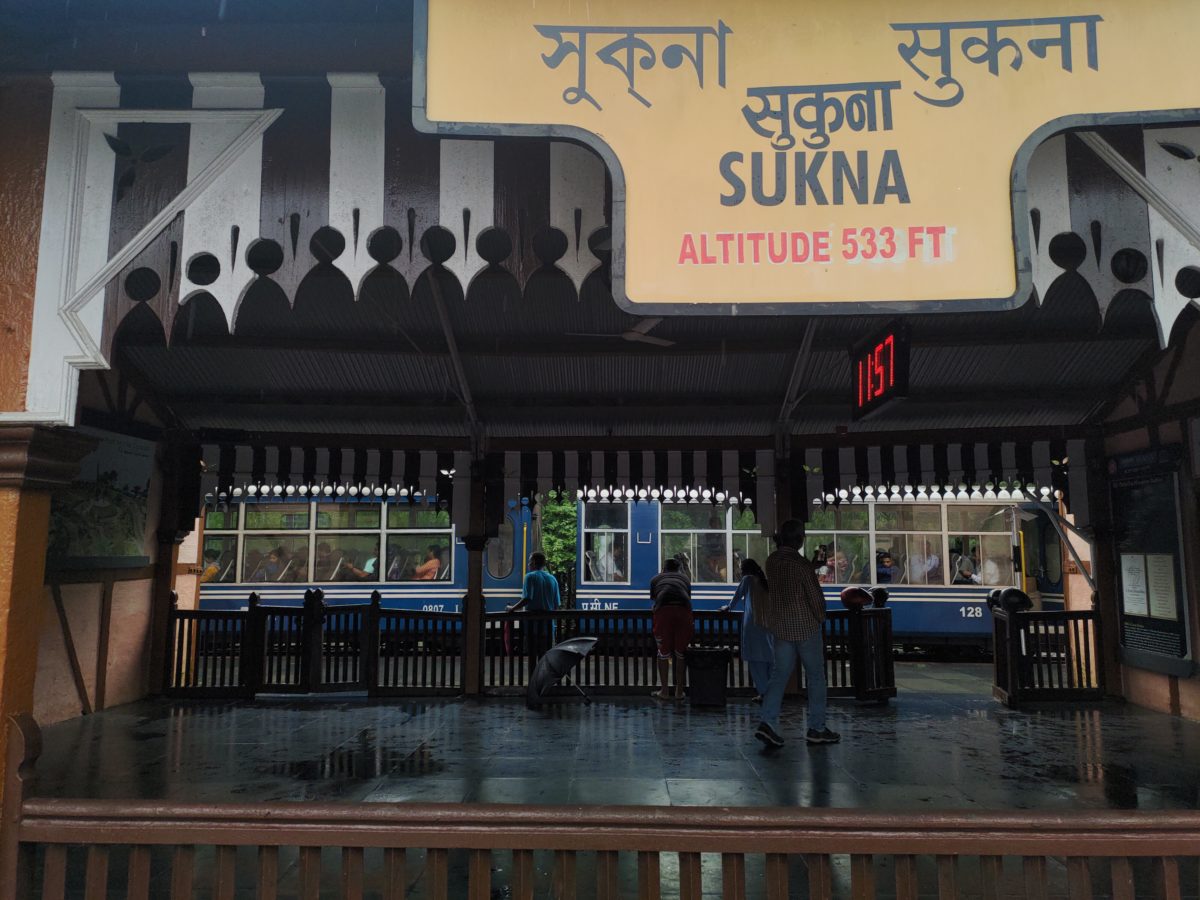
Even the residents love the experience of traveling like tourists. The winding path arrives after the train departs from the pristine Mahananda Wildlife Sanctuary. Filled with the sounds of beetles and silence, the tiny train chugs like enormous feet. This is also where the gradient changes dramatically, and from the warm wind of the plains, we experience a sudden and intense change in the landscapes. Chartering a train is an exciting option that the Darjeeling Himalayan Railway provides. During such private and exclusive journeys, one may observe the deep forests more. For Photographers and Plein-Air Artists, it is a once-in-a-lifetime chance to create records of the DHR that hardly any tourist has ever seen. Back in its heydays, the railways carried most of the heavy goods uphill, and not to mention, passengers traveled with ease and comfort. In 1991, the woods above Sukna saw the route change due to damage from the floods.
The train would make watering stops at frequent intervals. Two hard-working men guarding the frontier of the steam acted the bravest among many. Rong Tong has a water tank to refill the train. When charter trains with curious travelers stop, passengers often engage in casual chit-chats and record the incident in photographs and video. Some would not board the train and instead follow it from the road beside. Beyond Rong Tong, Loop #2 was removed after 1942 due to flood damage. A new reverse was adjoined, which became the longest reverse run. It is always fun to look at the first-time riders as they experience the Reverse Run – like an unexpected turn in their journeys ahead. For people who have been on the train several times, these are the stretches when they would prepare with excitement. As they sneak a peek from the glass windows, the train makes a distinct sound in the lower stretch of the Reverse. Villagers join in, some follow the train on their two-wheelers to greet the travellers.
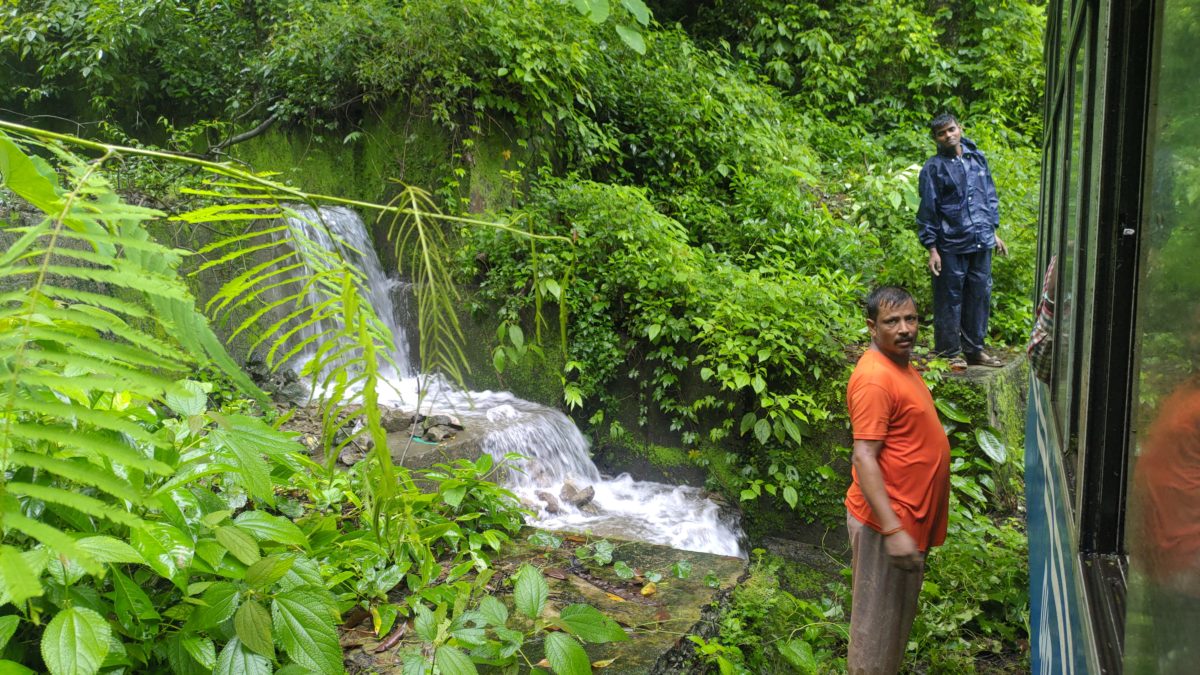
When the train departs Rong Tong and attempts to climb through the sheer gradients of the mountains, the lush green valley comes alive. The Zig-Zags become a recurring event, and views from the window seats appear majestic. This is where the first impression of the Darjeeling Hills materializes in all its glory! Filled with nature’s untouched mysteries, the foothills of the Eastern Himalayas travel parallel to the drifting clouds as we climb up. The forests of the Rong Tong traverse through some exhilarating zig-zags and deliver some of the best views from the DHR. Chunbatti has the lowest Loop. Frequent travelers would often identify it jovially and call upon the newcomers on the train to look at it with attention. If they made a technical stop, the locals would come near and tell you how many busy pice hotels ran between Chunbatti and Tindharia. We encounter Reverse #2 and #3 before the train reaches Tindharia. The Nepali musicians playing their beautiful Sarangis are a sight to look out for.
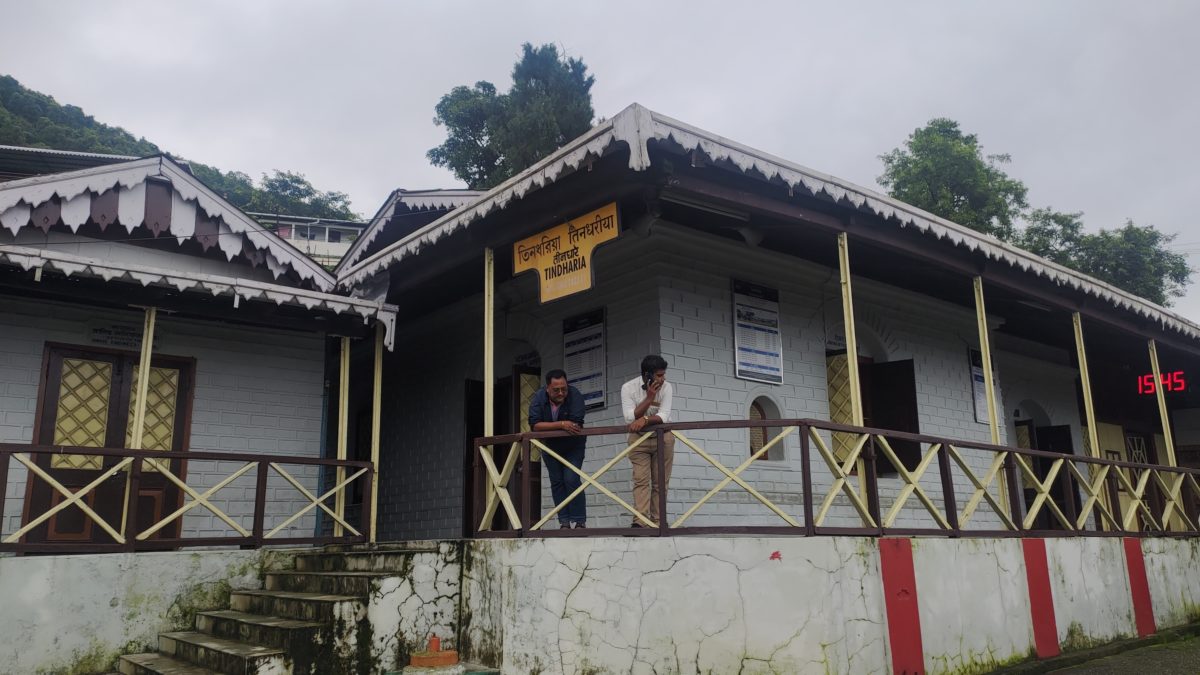
When you reach Tindharia, the beautiful tea gardens from the opposite side of the hills become clear and appear closer. People wondering about the much-heard Tindharia Workshop should note that this is located below the station. Before walking to the Workshop, I often step off the train at Tindharia for a tea and snack break at the station’s tea stall. Some days, I spend hours walking from Tindharia to Gayabari. I get some breathtaking views of the farming villages in the valleys. It is also an exciting experience to see the Officers’ Institute and Steam Engines placed at the Tindharia Workshop. If you know how to pace your travel correctly, this stretch of the DHR will be the paradise ahead. You can leave the train here and walk to a village nearby to experience the slow life. During harvest seasons, it is a great opportunity to explore these parts. There are several tea gardens connected to the passage between Gayabari and Tindharia.

Once upon a time, Darjeeling was nothing but a forest. It was a Sacred Forest for a handful of tribes, who called themselves the original inhabitants of the hills. These villages, located on the lap of pristine river streams and forested lands, hold testimony to the ancient traditions of the hill residents. One ideal thing to do is travel according to the festival calendar, which can be fetched from Tour Operators like us and anthropology experts from the region or over a friendly chat at a small hut over a cup of tea. During Trelda Tsechu, a celebration of Guru Padmasambhava’s birth, the village monasteries are decked up in colorful insignia. It falls during the less busier monsoon season and is one of the best times to experience the foothills.
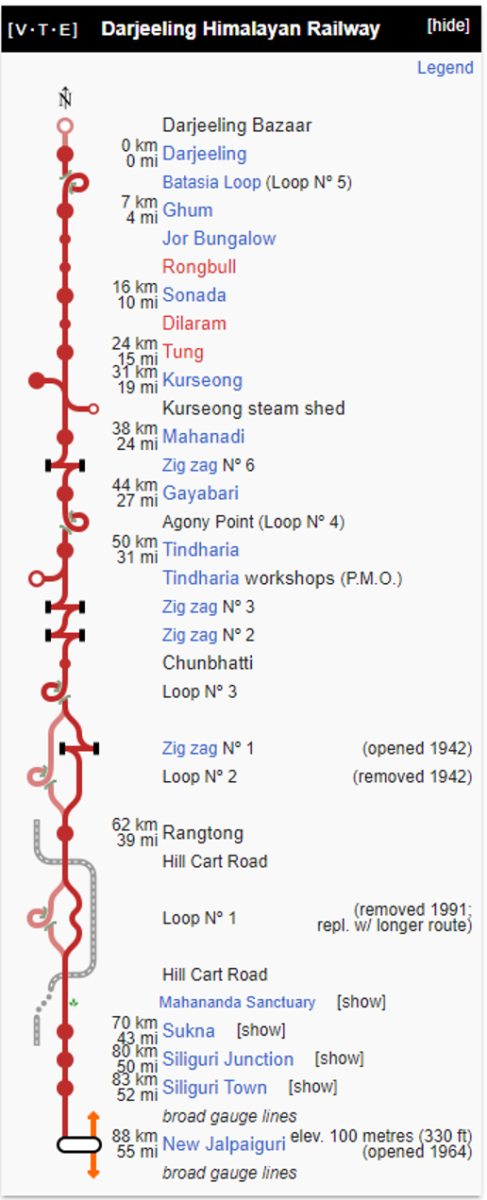
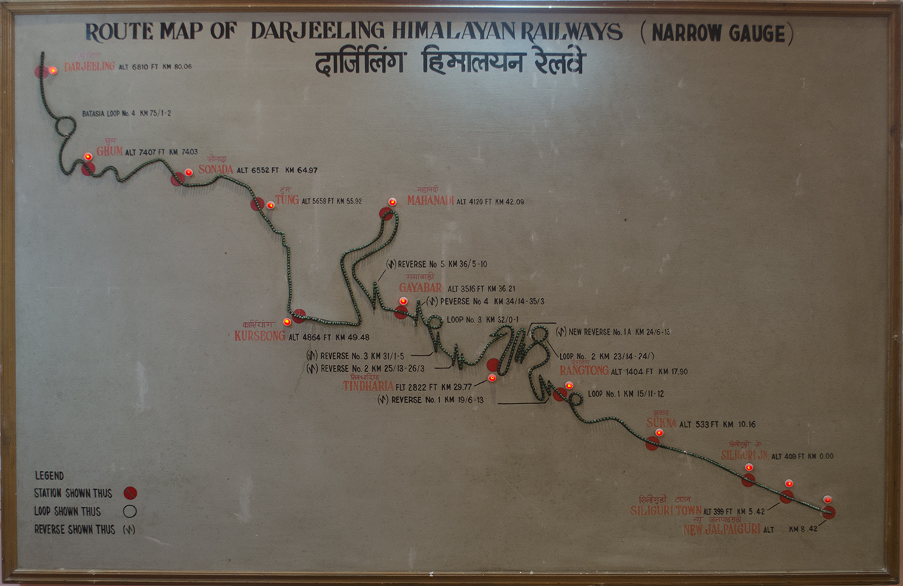
The journey from Gayabari to Mahanadi is exploratory, too. Sivitar Tea Estate appears like a shining crown on the serene valley beside the Sevok Khola, which eventually progresses to the River Mahananda. Once the train shifts to the mountain’s walls, it approaches the Paglajhora Waterfall, where once freedom fighter Subhash Chandra Bose took many morning strolls during his interning period at the family house of Giddapahar, built and looked after by his elder brother Sarat Chandra Bose, a senior Congress Party leader and freedom fighter. Many, like Bose, chose to live at the quaint settlements away from the hustle-bustle of the Darjeeling town and found places that offered a genuine escape. Upon reaching the Mahanadi Station, a narrow, steep road becomes visible, directing you to the Goomtee Tea Estate, which was sold to the Ranas of Nepal by its original planters, Henry Lennox and G.W.O.’Brien. To the west of Goomtee lies the Jungpana Tea Garden, known globally for producing teas with an exquisite Muscatel flavor. The newly explored Jungpana Forest Region has colossal offerings for someone who wants to spend quality time at the hushed hills and would love to take endless walks in the immaculate hills.
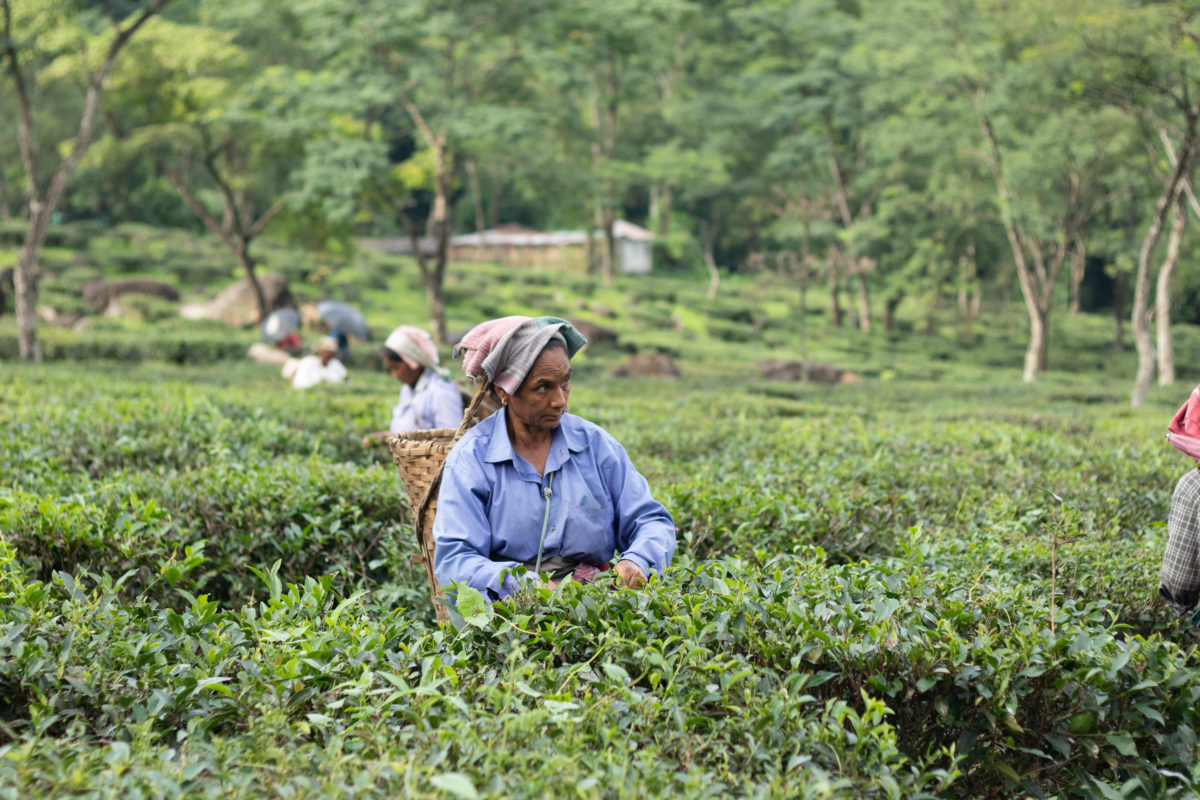
Moving on to Kurseong, travelers and locals alike halted for warm cups of tea and packed warm clothes as the journey brought the chilly wind closer. During the peak winters, the wind is bone-chilling and freezing. Before we reach Kurseong, the village of Gidda Pahar arrives with its rolling hills and sheer mountain views. The centuries-old Selim Hill Forest and Tea Garden appear distinctly attractive and pleasing. One can break their journey at Kurseong and take long walks to the Sarat Chandra Bose’s House at Gidda Pahar or trek up to Dow Hill to experience the alluring Pine Meadows above the beautiful Dow Hill School. Also, one may go further via the Pankhabari Road and visit the Old Kurseong Cemetery above the Makaibari Organic Tea Garden. Beneath the estate, there are several lower-altitude treks one may take to experience peaceful village life. Spring is one of the finest times to travel to these parts of the hills. These are found to be some of the most colorful villages from then on. Almost every house will have at least a couple of orange trees. Castleton Garden, which is known for its moonlight plucking, is mid-way. Many gardens today have restored the traditions of moonlight plucking and have been able to reintroduce forgotten specialties of teas.
Kurseong Station has come a long way as a repository of interesting accounts and exemplary accomplishments. It recently restored Cafe De’ Central, a beautiful vintage Cafeteria from 1881. Perhaps one can layover for a few days at Kurseong and take experiential walks in and around the sweet hill station. One day can be for a walk to St. Paul’s Church during prayers. Walking up to St. Mary’s Hill to gaze at the panoramic view of the Forest Ranger College is also a great trail. In the past, Church Gate served as a stop for railway officials, whose residences were constructed along this route, with Elysia Place at the highest point. Between 1880 and 1896, Kurseong Station was adjacent to St. Alphonsus School. I’d often follow the winding road uphill, passing by St. Paul’s Church on my way to reach Elysia Place, which serves as the headquarters of the DHR. The path is well-marked with signs, and after a short while, the splendid colonial structure of Elysia Place appears. Before taking the next day’s train to Darjeeling, one may visit the Kurseong Monastery, where a Lama (Monk) training school and a Nunnery function, too. Due to a plethora of exploration options, one can disburse a leisurely couple of days getting to know this Land of White Orchids.
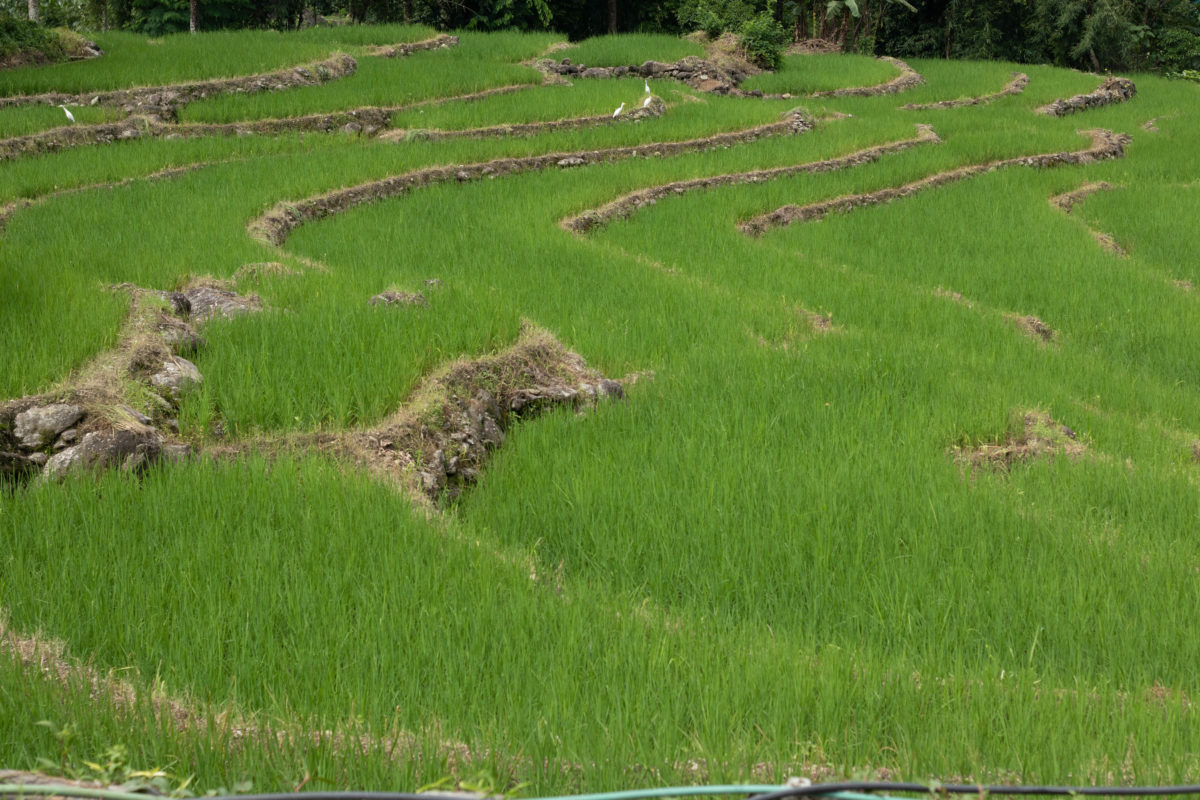
In search of amusement, the train moves up confident and boldly. Arrival at Tung is quite startling! The Station appears out of nowhere upon the edge of the hill. I have often wondered how the Driver aimed for a perfect and timely halt, as the station would not be visible until the very last moment. Between Tung and Sonada, a slim road takes you to the Balasun Tea Estate and the sparkling Balasun River that flows through the tea garden. This is a paradise for glampers. Once a Lepcha habitat, Balasun has a rich stock of flora and fauna. Travellers can take many such strolls leading to the uninterrupted forests. There are not many homestays yet, however it only requires a keen explorer to find his / her way out and experience the untamed. This is where the legendary Nepali novelist and short story writer Indra Bahadur Rai was born and lived most of his life. Further up, Dilaram tells a compelling story of several farming villages, located adjacent to the Dilaram Tea Estate. During farming seasons, it is quite an experience to join the locals in their customs and rituals. The Kirat-Khambu Rai community’s harvest celebration is a pleasant experience.
Sonada is a hotspot of wild escapades. Nature lovers and wildlife enthusiasts can travel to the Senchal Forest after leaving the station. Various villages occupy the undisputed forest lands. Astonishingly, the outline of the thick pine forests boasts a dense variety of affluent flora and fauna. It is quite an evocative journey while we stroll through the forest. The trek can lead us to Chattakpur, a forest village. The stretch also serves as an exceptional route for mountain bikers. The sixteen-kilometre trail can be broken down into a two to three-day trip for those interested in a slow-paced Himalayan village experience. The Tibetan Settlement in the lower Bustees of Sonada town is exemplary. Many families would love to host travelers, and the village is quite a commendable resource for exploring Tibetan culture and cuisine, especially if you are staying with one of the locals. Rangbull, on the way, was a thriving flea market for the travelers who would chance upon buying organic produce from the nearby villages. It also hosted a connection to the British Ropeway that ran on hydropower. This Ropeway was an addition to the existing railway system and was used to carry goods downhill to the remote villages. A part of the Ropeway also functioned near the Darjeeling Bazaar segment of the Railway lines as long as the adjacent godown remained active. Today, the flea market is still present, however, on a much smaller scale. Only a handful show up with their homegrown vegetables. From the late 1800s, several tea gardens used a similar Ropeway system to transport tea leaves between different sections of the estate. Almost all of them are non-functional today. In official records, the Ropeway division was known as the Darjeeling Himalayan Railway Extensions Company Ltd. The Company brought substantial investment to its core business, proving to be lucrative. Even today, the Imperial Bank of India (present-day State Bank of India, Laden La Road) proudly showcases some of the share certificates from the bygones. Many experts have heard that Ropeway brought in more revenue than the railways. It also had an additional unit adjoining the Teesta Valley Railway branch of the DHR.
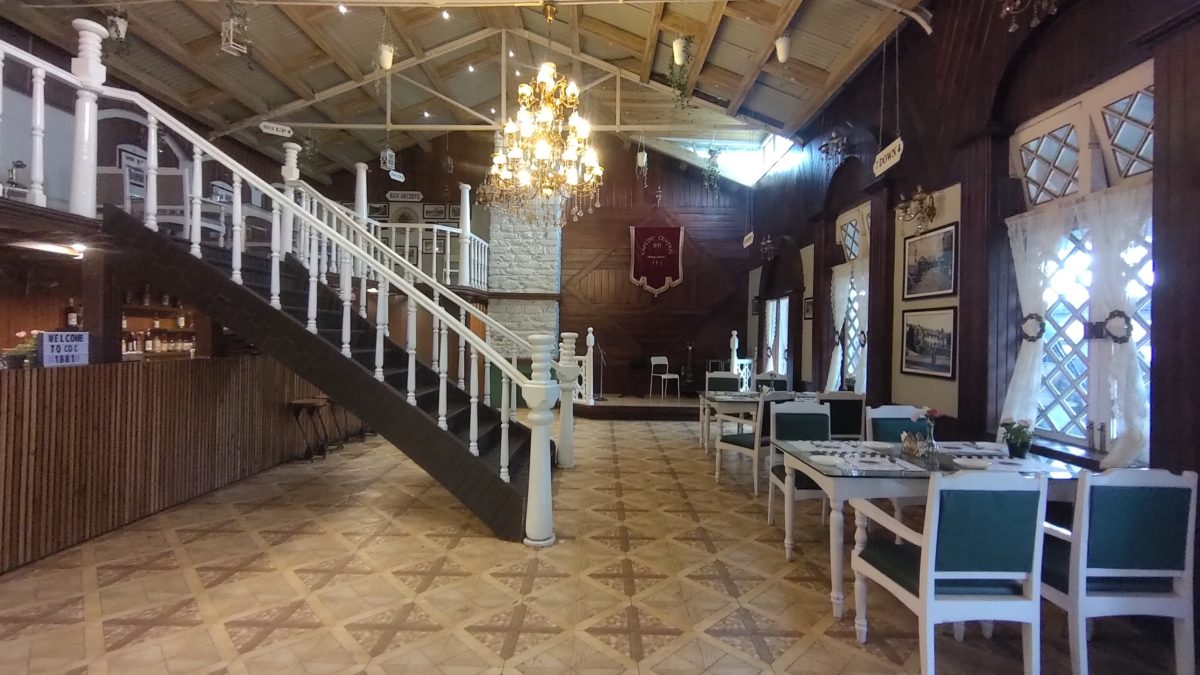
Sadly, Ghoom is only famed for being one of the highest railway stations. Very few stopped eagerly and looked beyond the touristy sites. While the Ghum Museum gives you a glimpse of DHR’s journey during the initial days, one must explore it in real time. Ghoom once housed regular recruitment camps for the Gorkha soldiers in the British Indian Army. Similarly, Jalapahar Cantonment above the Ghoom Railway Station used to host training and medical camps for the British Indian Army in Burma, Assam Rifles et al. Ghoom is also quite popular for the iconic DHR Joyrides. I have often thought of the iconic adverts and promotional posters that the Empire used to produce. Some of them are displayed at the Ghoom Museum above the station platform. Though several tourists advance to popular destinations such as Sukhia Pokhri, Maneybhanjan, Rangbhang, Lamahatta, etc., the real mysteries of the Darjeeling hills lie beyond the regular commentary of the tourist destinations. Jore Pokhri harbors the high-altitude Himalayan newt or salamander. They were found and retraced after many decades of disappearance. Amid the Ring Tong Garden resides the Salamander Lake, locally known as the Namthing Pokhri, an absolute source of Nirvana surrounded by imposing hills. Sadly, the Jore Pokhri Wildlife Sanctuary Project has been ignored by government agencies instead of being developed as a mainstream tourism destination.
After the final watering point, Darjeeling emerges as the epitome of hope, beauty, and tranquillity. The final destination for travelers and locals before the last couple of decades was Darjeeling Bazaar. Several porters from Kathmandu would gather in the station in the hope of finding their next assignments. During his travel in Darjeeling, Mark Twain’s account keeper vividly described the women porters of the Darjeeling Hills and their immaculate capability to literally carry everything on their heads.
Mark Twain described his exciting journey on Darjeeling’s “toy” train over 100 years ago, in 1895, as ” the most enjoyable day I have spent on earth mixed ecstasy of deadly fright and unimaginable joy.” He also writes, “After a while, we stopped at a little coop of a station just within the curtain of the somber jungle, a place with a deep and dense forest of great trees and scrubs and vines all about it. The Royal Bengal Tiger is in great force there and is very bold and unconventional. From this lonely little station a message once went to the Railway Manager in Calcutta: ‘Tiger eating station-master on front porch; telegraph instructions’.”
(Excerpted from “Himalaya: Adventures, Meditations, Life” edited by Ruskin Bond and Namita Gokhale)
Today’s Darjeeling, lying in the lap of the Eastern Himalayas, offers a brilliant tapestry of several cultures and heritage. During the colonial period of DHR’s journey, Darjeeling and lower towns residents did not have many other commuting options. Therefore, life was slow-paced alongside the Hill Cart Road. There were few houses then, and the train did not pass through much traffic. In Darjeeling Walks, we take people on several heritage walks and cultural excursions in the town, which are unique opportunities for a constructive dialogue with the beneficiaries of the Darjeeling Himalayan Railway. We also offer DHR Experience in three distinctly different routes, making people experience the quaint corners of the hills and allowing travelers unique social experiences. Across the connected villages and towns, there are windows in abundance to rediscover the Darjeeling Hills, which are unlike any other.
*UNESCO inscribed on its World Heritage List two additional 19th-century railroads, the Nilgiri Railway (2005) and the Kalka Railway (2008). The property and structures of all three were renamed the Mountain Railways of India.
Photographs by Anirban Dutta, Darjeeling Walks
Beautifully articulated gives one a complete knowledge of Darjeeling and what to do where to see! Wonderful Anirban enjoyed reading your article!
Sounds Wonderful! As a Passionate former “Tea Taster and Tea Broker”, as well as one who benefited from the Family Tea and Rubber Plantations in Sri Lanka 🇱🇰 I wish you all the Very best in this endeavour!
What a mesmerizing account of the journey route and the stories it holds along the way. This write up is as delightful as any of your Darjeeling Walks tours!
Need to include the Siliguri to Kurseong train journey in our next visit to Darjeeling.